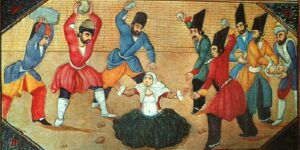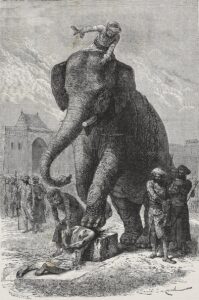Capital punishment, often referred to as the death penalty, has been used as a method of crime deterrence since the earliest societies. Historical records show that even the most ancient primitive tribes utilized methods of punishing wrongdoers, including taking their lives, to pay for the crimes they committed. Murder most often warrants this ultimate form of punishment. “A life for a life” has been one of the most basic concepts for dealing with crime since the start of recorded history.
Origins:
As tribal societies developed into social classes and humankind created its own self-governed republics, capital punishment became a common response to a variety of crimes, including sexual assault, treason, and various military offenses. Written rules were created to notify the people about the penalties they would face for participating in any of these misdeeds. One of the earliest written documents that supported the death penalty was the Code of Hammurabi, which was written on stone tablets around 1760 BC. It contained 282 laws that were collected by the Babylonian King Hammurabi, including the theory of an “eye for an eye.” Several other ancient documents supported capital punishment, including the Jewish Torah, the Christian Old Testament, and the writings of an Athenian legislator named Draco, who proposed the death penalty for a large variety of misdeeds in ancient Greece.
Early forms of capital punishment were designed to be slow, painful, and torturous. In some ancient cultures, law breakers were put to death by stoning, crucifixion, being burned at the stake, and even slowly being crushed by elephants. Later societies found these methods to be cruel and unusual forms of punishment, and sought out more humane practices. During the 18th and 19th centuries, legal bodies found faster and less painful approaches to the death penalty, including hanging and beheading with the guillotine. While these were still violent and bloody practices that were often large public spectacles, the end result was usually instantaneous and therefore seen as more compassionate.
In the United States, capital punishment has existed since the founding of the original colonies, and was utilized for a large number of crimes including burglary, murder, treason, counterfeiting, and arson. Outside of the law, lynch mobs often formed to bring the accused to justice. Law makers in the U.S. began to review and revise policies behind the death penalty around the time of the American Revolution. In 1791, the Constitution was amended for the eighth time, to prohibit any form of punishment considered “cruel and unusual.” Although this was not an attempt to ban capital punishment, it did begin a movement towards carrying out more humane executions. By the late 1800s, employees of Thomas Edison introduced the electric chair to accomplish this goal. Later, in the 1970s, lethal injections entered the foray as another option.
Over time, the death penalty has become even more controversial throughout the world. Opponents to the practice declare it to be inhumane and unfair, and believe that no life should be taken, regardless of the crime that has been committed. DNA testing has proven the innocence of several individuals on death row, and the argument that no one should be executed to avoid killing an innocent individual has grown in response. Several states in the U.S. no longer support the death penalty, and many countries have abolished the practice completely.
Back to Crime Library
|
|
|


